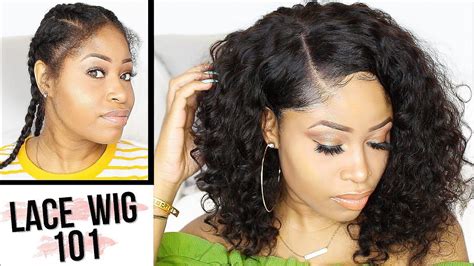Dutch Braids vs French Braids: A Detailed Comparison
Braids are a versatile and timeless hairstyle that can complement any occasion. Two of the most popular braiding techniques are Dutch braids and French braids. Each technique offers unique aesthetic and functional advantages, making them suitable for different preferences and hair types. This detailed comparison of Dutch braids vs French braids will help you determine the best option for your next hairstyle.

Dutch braids, also known as inside-out braids, create a raised and textured effect on the surface of the hair. The braiding process involves crossing the outer strands under the center strand, resulting in a more voluminous and intricate braid.
Key Features of Dutch Braids:
- Raised appearance
- Textured surface
- Intricate pattern
- Requires practice to master
French braids, on the other hand, are a classic braiding technique that creates a smooth and elegant finish. The braiding process involves crossing the outer strands over the center strand, resulting in a braid that lies flat against the head.
Key Features of French Braids:
- Flat appearance
- Smooth surface
- Simple to learn
- Versatile and timeless
The following table provides a concise comparison of the key features of Dutch braids and French braids:
| Feature | Dutch Braid | French Braid |
|---|---|---|
| Appearance | Raised, voluminous | Flat, smooth |
| Texture | Intricate, textured | Simple, smooth |
| Difficulty | Moderate to difficult | Easy to learn |
| Versatility | Less versatile | More versatile |
To further illustrate the differences between Dutch braids and French braids, consider the following visual representation:
 |
 |
| Dutch braid: Raised, textured | French braid: Flat, smooth |
The choice between a Dutch braid and a French braid ultimately depends on your personal preferences, hair type, and the desired look.
Consider a Dutch braid if:
- You want a volumizing and eye-catching braid.
- You have thick or coarse hair.
- You are proficient in braiding techniques.
Consider a French braid if:
- You prefer a classic and elegant braid.
- You have fine or slippery hair.
- You are new to braiding or want a simple style.
Dutch braids and French braids can be incorporated into a wide range of hairstyles, including:
- Dutch braid crown: A braid that wraps around the head like a crown.
- French braid updo: A braid that is gathered up into a bun or ponytail.
- Dutch braid pigtails: Two braids that start at the crown and end at the nape of the neck.
- French braid headband: A braid that is worn across the forehead like a headband.
Dutch Braids:
- Divide the hair into three sections at the crown.
- Cross the left strand under the center strand.
- Cross the right strand under the new center strand.
- Continue this process, adding hair from the sides as you go.
- Secure the braid with a hair tie.
French Braids:
- Divide the hair into three sections at the crown.
- Cross the left strand over the center strand.
- Cross the right strand over the new center strand.
- Continue this process, adding hair from the sides as you go.
- Secure the braid with a hair tie.
- Use a comb or brush to remove tangles before braiding.
- Divide the hair into equal sections for a neat finish.
- Keep the hair taut as you braid to avoid loose or messy strands.
- Practice regularly to improve your braiding technique.
Both Dutch braids and French braids offer unique advantages and aesthetics. Dutch braids provide a bold and voluminous look, while French braids exude a classic and elegant charm. Understanding the differences between these techniques will help you create the perfect braid for your next hairstyle. Whether you prefer a raised and intricate Dutch braid or a smooth and sophisticated French braid, there is a braiding option to suit every taste and hair type.
